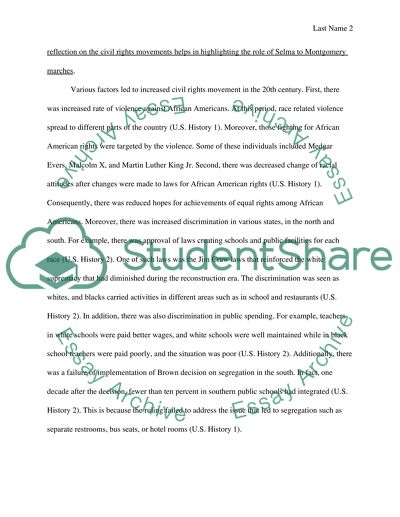Cite this document
(“1965 Selma to Montgomery march Essay Example | Topics and Well Written Essays - 1500 words”, n.d.)
Retrieved from https://studentshare.org/history/1494460-1965-selma-to-montgomery-march
Retrieved from https://studentshare.org/history/1494460-1965-selma-to-montgomery-march
(1965 Selma to Montgomery March Essay Example | Topics and Well Written Essays - 1500 Words)
https://studentshare.org/history/1494460-1965-selma-to-montgomery-march.
https://studentshare.org/history/1494460-1965-selma-to-montgomery-march.
“1965 Selma to Montgomery March Essay Example | Topics and Well Written Essays - 1500 Words”, n.d. https://studentshare.org/history/1494460-1965-selma-to-montgomery-march.


